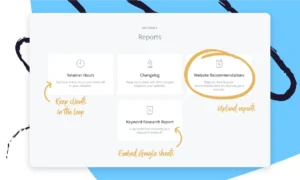Sharing files with clients is a daily necessity for most online businesses. Whether you're running a startup, managing a law firm, or heading up a marketing agency, you're likely dealing with various document types, some of which may contain sensitive information.
While email used to be the go-to for file sharing, it's now become a less-than-ideal option. Email systems are notoriously unreliable and lack robust security features.
If you're handling sensitive data, you need to avoid sending any personally identifiable information via email. Cyber threats are on the rise, with businesses of all sizes finding themselves in the crosshairs. A data breach could have serious consequences, not just for your reputation, but from a legal standpoint as well.
Sending large files via email can bog down your system, or they might get rejected by your email server altogether. These files can also get caught in spam filters, leaving your clients in the dark.
Let's explore why you should ditch email for file sharing and look at some better alternatives.
The pitfalls of sharing files with clients over email
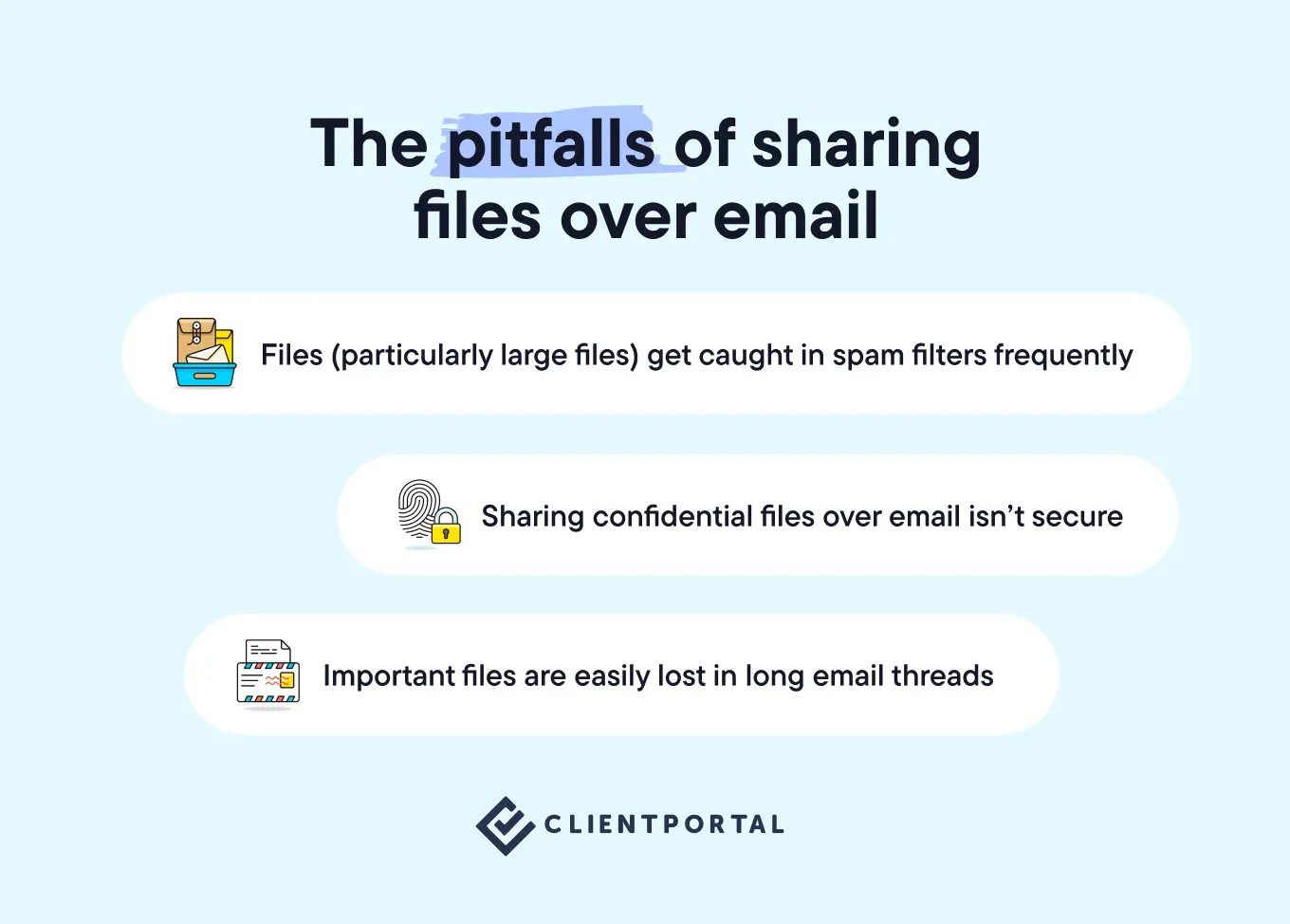
Let's start with the elephant in the room: large files. You need to send an important document to a client ASAP. You hit send, and hours later, you get a call saying your email never arrived. The trouble with email systems is that large files often fail to send.
This can happen for various reasons. Large files can get caught in spam filters, especially when size limits are set on email systems. Some companies restrict email sizes due to storage constraints, and certain platforms have default size limits.
Next up is client confidentiality. Email isn't exactly Fort Knox when it comes to security - it can be hacked, potentially compromising your communications. If you're in a field like law or finance, and you have sensitive client information in your emails, this data could end up in the wrong hands. Stolen data is big business, potentially leading to identity theft and financial fraud.
Another issue with sharing files via email is that they're easily lost in the inbox abyss. You've sent that crucial document to your client, but they forgot to save it. It's all too easy for files to get buried in long email threads, resulting in wasted time trying to dig them up again.
Modern alternatives for client file sharing
Instead of relying on email for file sharing, there are several safer and more efficient alternatives. Here's a rundown of some options, along with their pros and cons:
File transfer services (e.g., WeTransfer, Dropbox Transfer)
Pros:
- These services can handle very large files, bypassing spam filters.
- They're user-friendly, secure, and allow you to request files directly from clients.
- WeTransfer's free version allows transfers up to 2GB, while the paid plan goes up to 200GB.
- Dropbox Transfer offers up to 2GB on the free version and a whopping 200TB on the paid plan.
Cons:
- File transfers often have time limits, especially WeTransfer, which expires after 7 days.
- If your clients are out of office and don't download in time, you might need to resend. The reliance on clients to download can be problematic, especially if they have limited storage.
Cloud storage systems (e.g., Google Drive, Dropbox)
Pros:
- Cloud systems offer easy storage and multiple folder systems for any file type, with mobile apps for on-the-go access.
- Google Drive's free version offers up to 15GB of storage, upgradable to 100GB for a small fee.
- Dropbox provides 2GB per user on the free plan and up to 2,000GB on the paid version with 30-day recovery and version history.
Cons:
- These systems offer limited customization beyond folder names and hierarchies.
- There are potential privacy concerns – Dropbox has experienced hacks in the past.
- You'll also quickly hit the free data limit.
- Depending on permissions, there's a risk of clients accidentally deleting files, forcing you to re-upload.
Project management tools
Pros:
- There's a plethora of project management tools out there, from Trello to Asana to Monday. The advantage is keeping everything related to one project in one place.
- You can usually upload various file types to feeds or boards within these tools.
Cons:
- Each tool has its own quirks and often requires a learning curve. Both your team and clients might find these tools challenging to navigate.
- You need to keep projects open, or clients lose access to files.
- To unlock all features, these tools can be pricey, so unless you're already using one, it might not be worth the investment.
Client portals
Pros:
- Easy to navigate, client portals allow you to store files within the system itself or integrate with cloud storage solutions.
- Your clients can easily upload their own files safely and confidentially with minimal risk.
- You can usually set different restrictions to prevent file deletion or limit viewing permissions.
- Many client portals can be customized to match your branding and specific needs.
Cons:
- Some client portals require a level of setup that might be too technical for your team and may require a third-party contractor to install.
- Many premium solutions come with a hefty price tag, so if you don't already have access to a client portal in an existing platform, this could be a significant investment.
Choosing the right file sharing solution
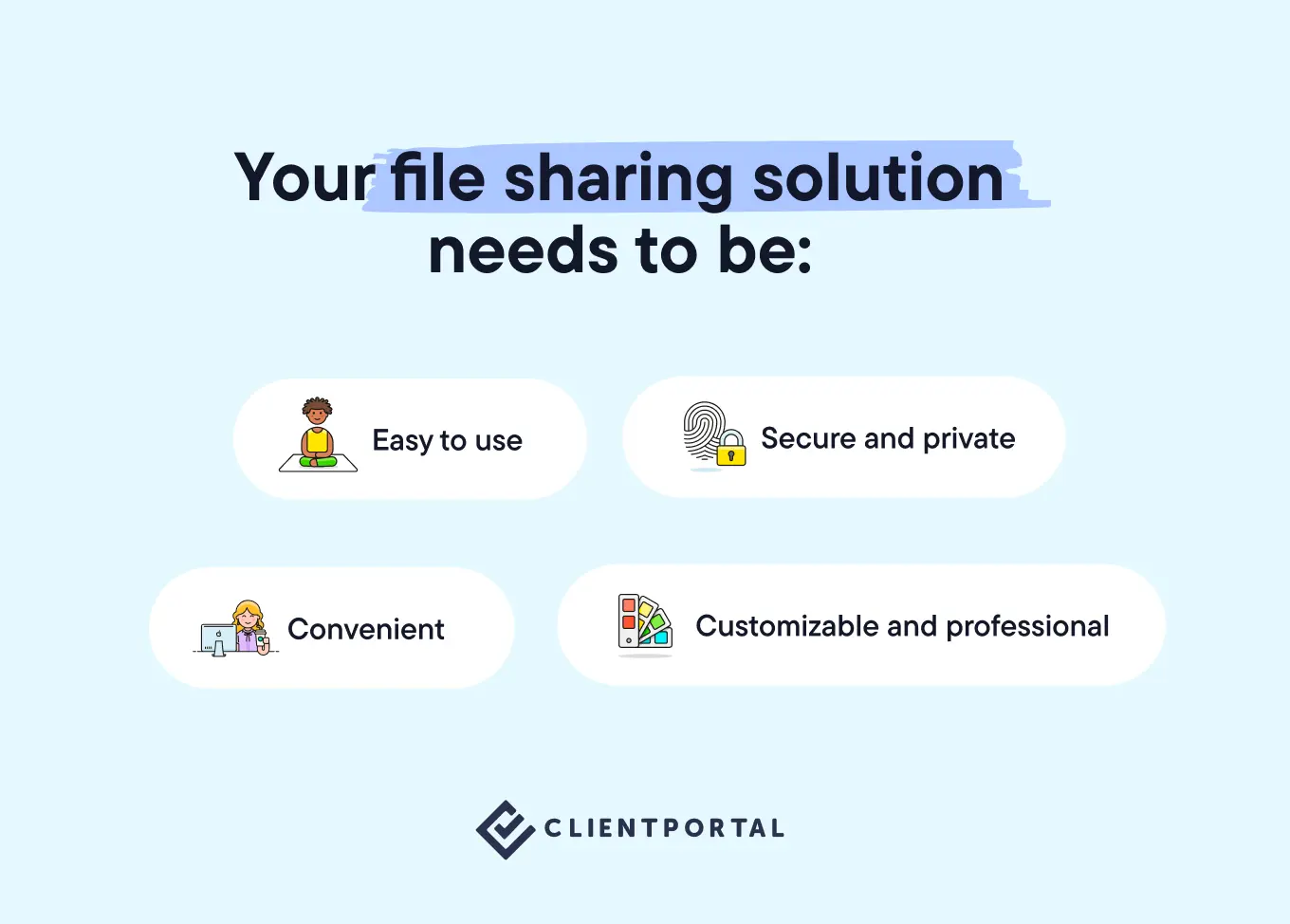
With so many options out there, it can be overwhelming to figure out which one is best for your business. Let's break it down by comparing each option across key factors:
Security
While Google has robust built-in security, cloud platforms have had their share of issues over the years. Dropbox, for instance, faced a high-profile hack a few years back. File transfer services come out on top for secure uploads. They offer direct transfers from one user to another without storing files, minimizing security risks.
Ease of use
Google Drive and Dropbox are user-friendly but basic with limitations. WeTransfer wins for simplicity, but the free plan has expiry limitations. Project management tools often have a steeper learning curve for first-time users. Client portals strike a balance, offering ease of use and simplicity for first-time users.
Accessibility and convenience
File transfer systems and project management tools have limited flexibility and accessibility. WeTransfer, for example, is a one-time use platform with a week-long expiry. Cloud storage takes the crown for client convenience and accessibility.
Customization and professionalism
Standard cloud storage platforms and project management tools come with their own branded look and feel. They usually lack customization options, offering only a generic experience. Client portals, on the other hand, can be fully customized to match your branding, providing your clients with a more professional and personalized experience.
Our Top Pick: Client Portal
For the ultimate client file sharing solution, we recommend Client Portal. Trusted by over 8,000 companies worldwide, this tool is a simple plugin that seamlessly integrates with your WordPress website. It offers a user-friendly file-sharing experience with enhanced security for private files. Your clients get 24/7 access to their portal, leading to increased productivity and satisfaction!

Client Portal is fully customizable and plays well with other cloud storage solutions like Google Drive or Dropbox. You can even use it alongside project management tools like Trello. This means you won't need to overhaul your current workflow, and you can create as many portals as your client base requires.
With Client Portal, you can create confidential libraries for sharing sensitive documents, invoices, and timesheets. You can also use it to share large creative assets like images and videos without worrying about file size restrictions. Best of all, you'll know that when you share your documents, they won't get lost in the shuffle or trapped in spam filters.
Pro tip: Combine Client Portal with your existing cloud storage or file transfer services for a seamless experience. Your clients will enjoy an easy-to-use portal along with the convenience of familiar cloud storage systems or file transfer services.
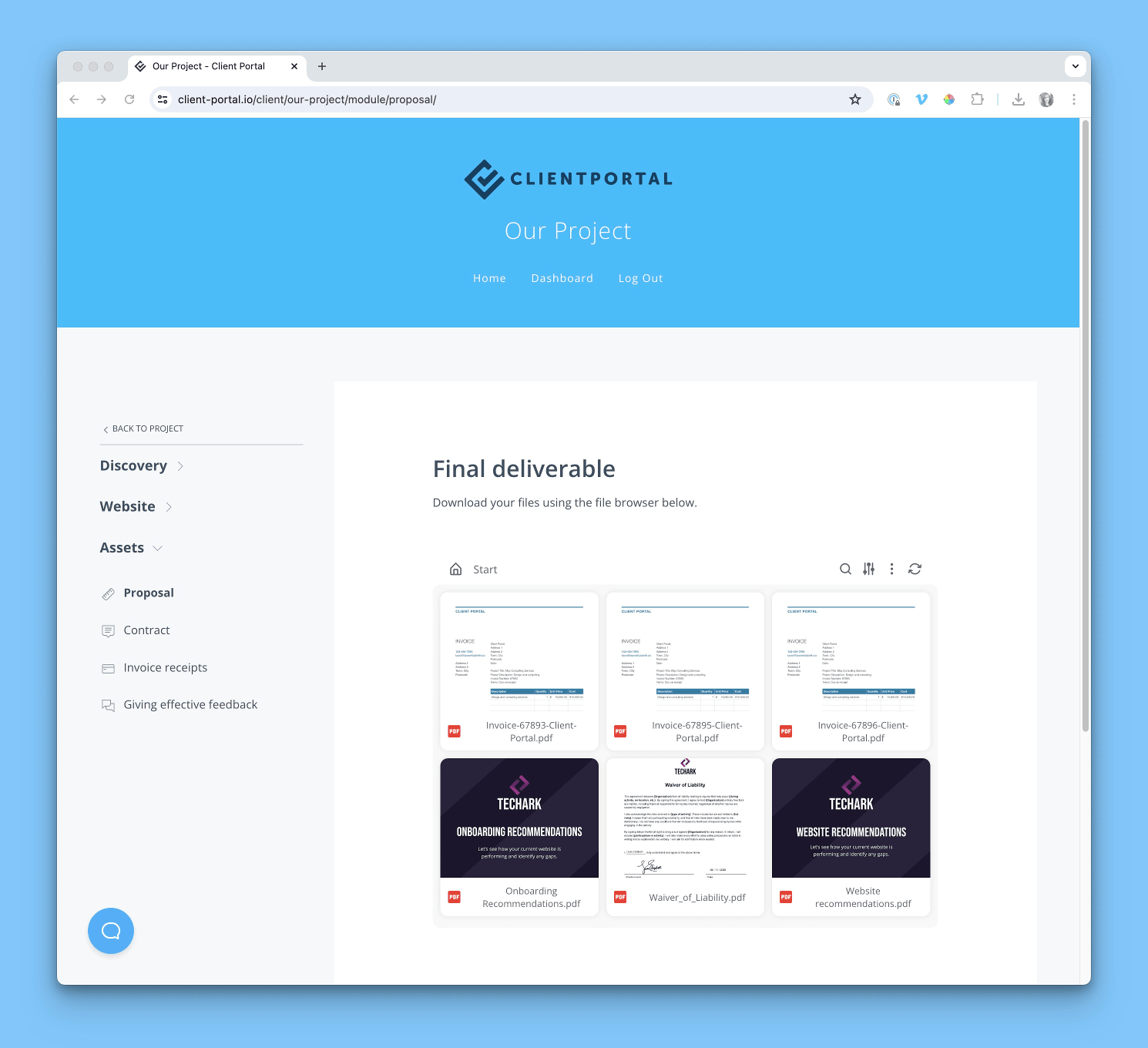
Wrapping up
Relying on email for file sharing is outdated and risky. Files can get buried in crowded inboxes, security is questionable, and large files often get caught in spam filters. If you're looking for a streamlined way to share files with your clients, a client portal is the way to go.
Client Portal is a plugin that integrates smoothly with your WordPress website. It offers more benefits than standard cloud storage, project management tools, or file transfer platforms. For small businesses, this portal is a time and resource saver. If you're in fields like accounting or law, you can securely share confidential information with your clients. And if you're running a marketing agency, you can share a wide range of creative assets at any time.
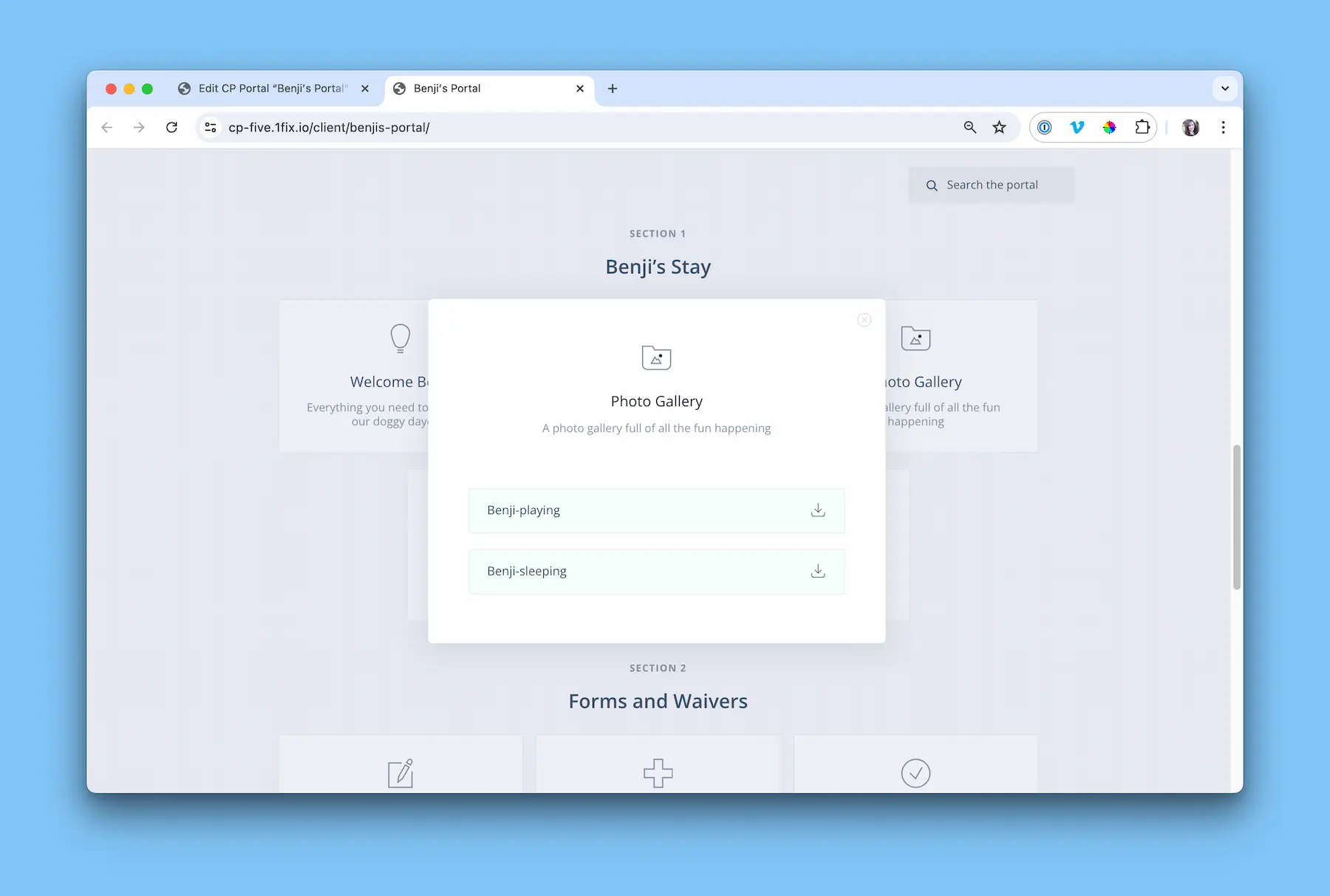
Flexible, accessible, and fully customizable, Client Portal's user-friendly interface makes it accessible even if you're not particularly tech-savvy. Plus, you won't need a developer to get this plugin up and running. Give your clients access to an easy file-sharing portal where they can upload files without your team's involvement. Instead of wasting precious hours trying to locate and resend lost files, your team can focus on what really matters.
Ready to build a simple, secure, and professional file-sharing system with Client Portal? Learn more and get started today!


